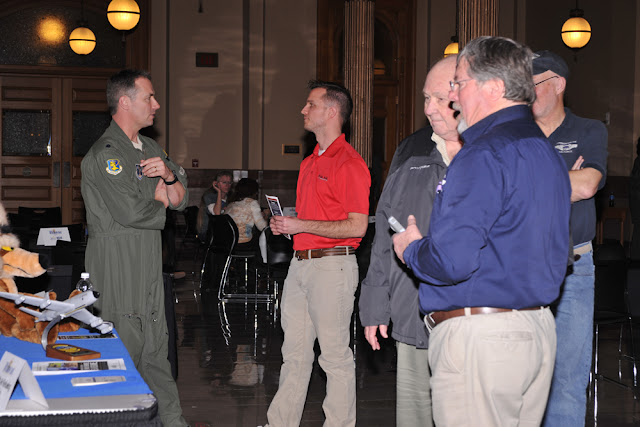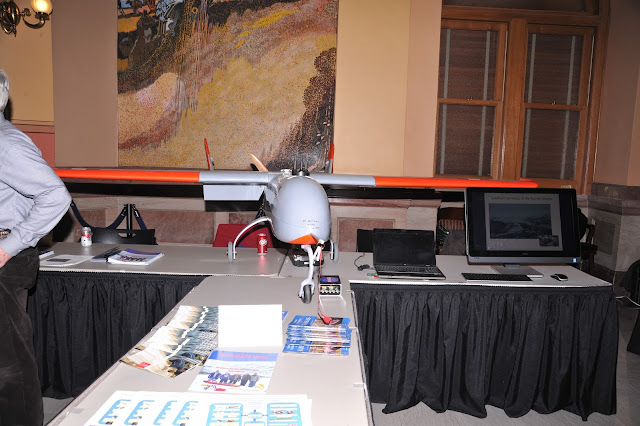Art is way of
communicating a message or a thought through visual creation and design.
There is a great deal
of art that we may take for granted while traveling across Kansas roads: The
way that highways are designed, how traffic signs use color and graphic design
to communicate informative messages as we travel and how a bridge is created so
that these infrastructures can bear the weight of thousands of vehicles a day
traveling across them.
All of these aspects of
transportation and more required an artist’s hand at some point and the end
result, while not exactly something you can hang on your office or living room
wall, are still incredible works that can be appreciated by experiencing them.
Along Kellogg/U.S. 54
in Wichita, travelers get the chance to experience the infrastructure and incredible bas-relief sculptures
that were created by artist, Steven Weitzman.
Bas-relief sculptures are created when the sculpted elements remain attached to the background.
One of Weitzman’s sculptures in Wichita is a piece titled “Time Passages,” and it includes 36 cast stone bas-relief panels that span 16,000 square feet. It was created using form liners.
Bas-relief sculptures are created when the sculpted elements remain attached to the background.
One of Weitzman’s sculptures in Wichita is a piece titled “Time Passages,” and it includes 36 cast stone bas-relief panels that span 16,000 square feet. It was created using form liners.
 |
| A section of Steven Weitzman's "Time Passages" sculpture from a distance. Photo Credit: Steven Weitzman creativedesignresolutions.com |
Weitzman’s website, creativedesignresolutions.com, said this sculpture was selected as the aesthetic theme for the Kellogg/Oliver interchange.
“The designs include quotations regarding the passage of time, monumental roman clocks, a 25-foot vertical working sundial and enormous leaves that appear to be scattered by the wind and passing vehicles,” the website said. “The quotation cast into the parapet fascia of the bridge serves as a pleasant reminder to the commuters that ‘The Journey is the reward.’”
 |
| A car drives past a secion of Steven Weitzman's bas-relief sculpture, "Time Passages" along Kellogg/U.S. 54. Photo credit: Steven Weitzman. creativedesignresolutions.com |
We had the opportunity to interview the artist about his work, and his experiences as he creates other works similar to “Time Passages.” Weitzman explains how art is essential to transportation.
What was your inspiration for placing these bas-relief sculptures along highways and bridges?
SW: Storytelling and discovery is the hallmark of my design work. At the Kellogg and Woodlawn interchange, you would discover a dynamic, non-repetitive bas-relief sculpture which is 25 feet high. This exciting, highly-detailed retaining wall affects changes with the movement of the sun. It was made entirely from only 36 form liners and also includes landscaped areas. My projects have to be affordable for the client and easily fabricated by normal construction means and methods. In this case, we were able to create unlimited combinations and permutations showing stylized planted fields of the Kansas landscape as seen from high above simply by rotating and re-configuring the placement of these beautiful liner sections.
 |
A section of a retaining wall at the Kellogg/Oliver Interchange in Wichita.Photo credit: Steven Weitzman. creativedesignresolutions.com
|
How are these works along highways created? How long can it
take?
SW: To begin with, I am normally brought on to serve as a liaison between a DOT and their engineers of record as well as their constituents to help translate the engineering requirements and needs of the DOT with the interests of their constituents. The final goal is to produce low cost (often 1 percent or under), low-maintenance, high-quality and site-specific safe infrastructure enhancements. I vet the information derived from these community outreach meetings and our own research with the DOT, and then I return to present the conceptual design to the community. This can include on-site computer models, highly realistic drive-throughs and fly-throughs, and any other means to accurately show the DOT and their constituents their aesthetic options and possible alternatives for their specific project. The timeline is usually predicated on the letting dates, but it can take as little as five months or as long as the engineering design team requires, since we coordinate with the engineering development.
What is the reception of these projects when they are installed? Who do they impact?
SW: I have been humbled by the outpouring of compliments, gratitude, and awards my company has received over the years for our context-sensitive infrastructure projects. DOT Directors of Operations, District Engineers, community leaders, and constituents have expressed to me and my staff the positive effect our work has had in transforming the everyday lives of their citizens. They appreciate the way we tell the story of their community through the art that my company, Creative Design Resolutions, creates for them.
What messages do these sculptures share with the communities that they are installed in?
SW: We tell the story of the place and the people it serves. That story begins with the community’s involvement and is balanced by the needs and requirements of the DOT. When completed, it reflects the significance of the people, their environment, their history, and their future. We understand that people want to be proud of where they live. In this regard, transportation infrastructure projects function as local or regional landmarks, gateways to cities or other symbols for communities, and may thus make a strong impression on residents and visitors alike.
 |
| A section of the bas-relief sculpture, "Time Passages" along Kellogg/U.S 54. Photo credit: Steven Weitzman. creativedesignresolutions.com |
Do you feel that art and transportation can work
together? If so, how?
SW: Absolutely. They have to. First, the integration of the aesthetic enhancements must coordinate with the overall project timeline and fit with the budget. The art should also meet the community’s vision. Additionally, the chosen artist needs to be familiar with the engineering requirements of these types of projects. They will need to work closely with the engineers of record throughout their engineering design process. This can be done in a more cost-effective way by getting the artist involved early in the engineering design phases of the project, because at that point many of the aesthetic decisions can be incorporated into the superstructure or base structure without adding any extra costs.
SW: Absolutely. They have to. First, the integration of the aesthetic enhancements must coordinate with the overall project timeline and fit with the budget. The art should also meet the community’s vision. Additionally, the chosen artist needs to be familiar with the engineering requirements of these types of projects. They will need to work closely with the engineers of record throughout their engineering design process. This can be done in a more cost-effective way by getting the artist involved early in the engineering design phases of the project, because at that point many of the aesthetic decisions can be incorporated into the superstructure or base structure without adding any extra costs.
Mr. Weitzman, thank you for your time in answering these
questions. Is there anything else you would like our readers to know about your
work?
SW: I have been extremely fortunate to have worked in the transportation design and public art industries since 1971. My company, Creative Design Resolutions, was created in 1998 to focus solely on aesthetic integration in highway and transportation projects. Since that time, we have worked with many Departments of Transportation in the country and numerous architectural and engineering firms nationwide. I am gratified to have completed dozens of signature projects that may have had a small but lasting effect on the beauty of America's Interstate highway system.
SW: I have been extremely fortunate to have worked in the transportation design and public art industries since 1971. My company, Creative Design Resolutions, was created in 1998 to focus solely on aesthetic integration in highway and transportation projects. Since that time, we have worked with many Departments of Transportation in the country and numerous architectural and engineering firms nationwide. I am gratified to have completed dozens of signature projects that may have had a small but lasting effect on the beauty of America's Interstate highway system.

























